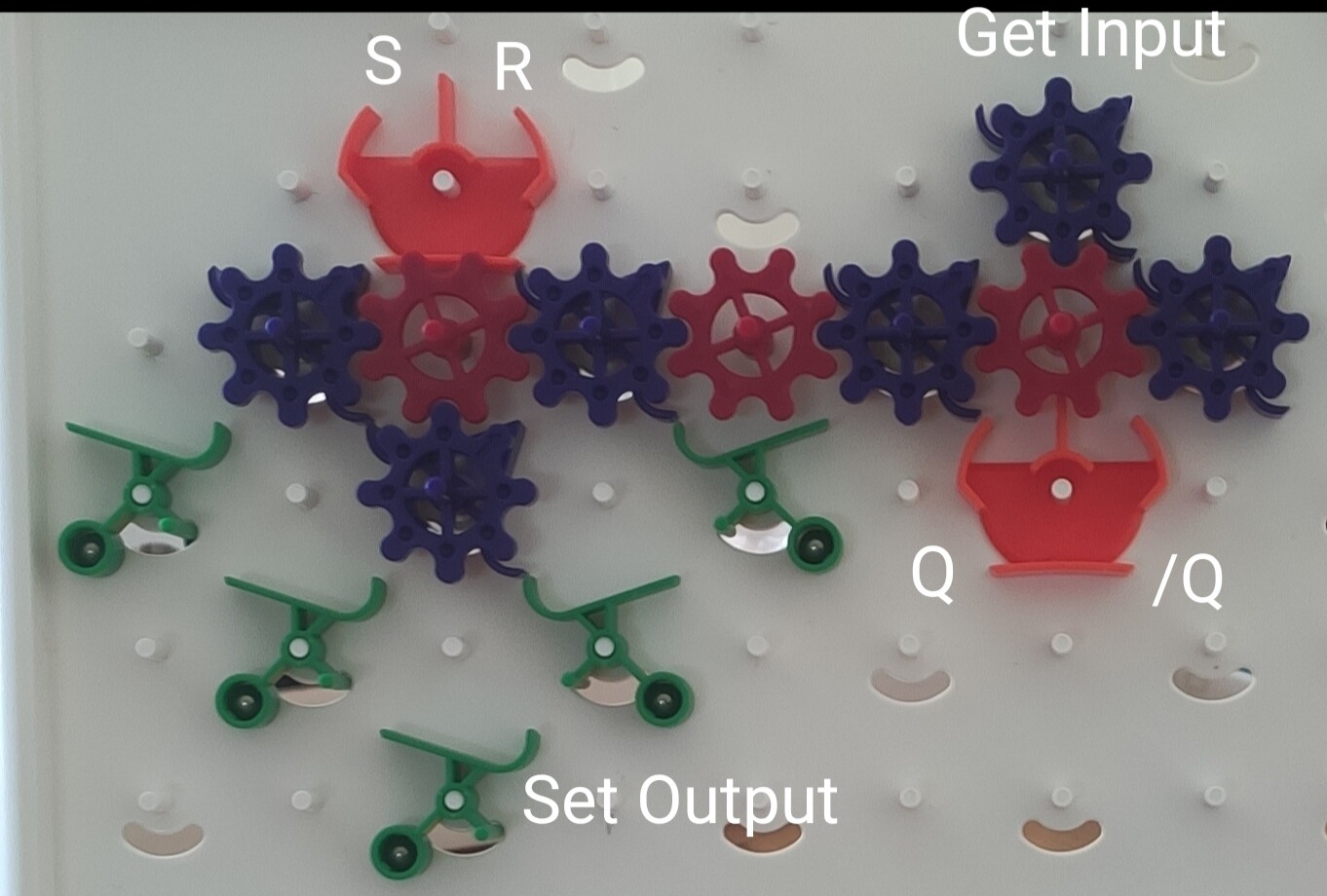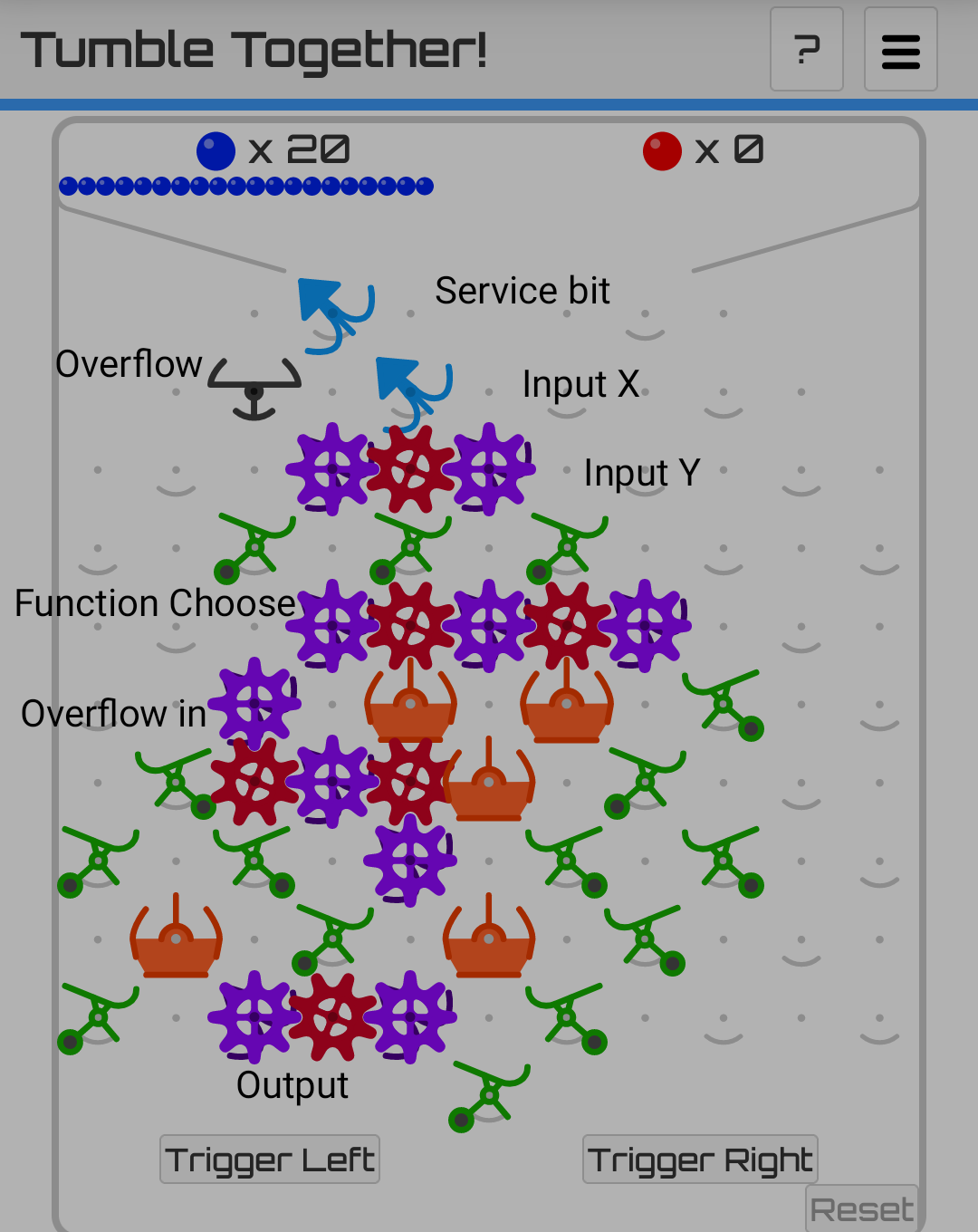Someone mentioned this idea during the Kickstarter campaign and I’ve been excited about it ever since. Their idea was to write a compiler that could take code written in some language (say, C++ or Python, for instance) and translate it into a Turing Tumble layout.
I’ve never written a compiler, but I imagine it would be no small undertaking. Nevertheless, it sounds like a fun challenge, and it would answer important questions like:
- How big would the TT board need to be to run Doom?
- What is the question to the answer ‘42’?
But more seriously, it would be useful to see how big of a TT board would be necessary to do more complex operations. Is it worth making a bigger version? How big a board would you need to create a simple, but functioning processor? How fast would it run? How many marbles would it take to run a simple program on it?
I hope someone decides to take on this challenge!
 )
)
